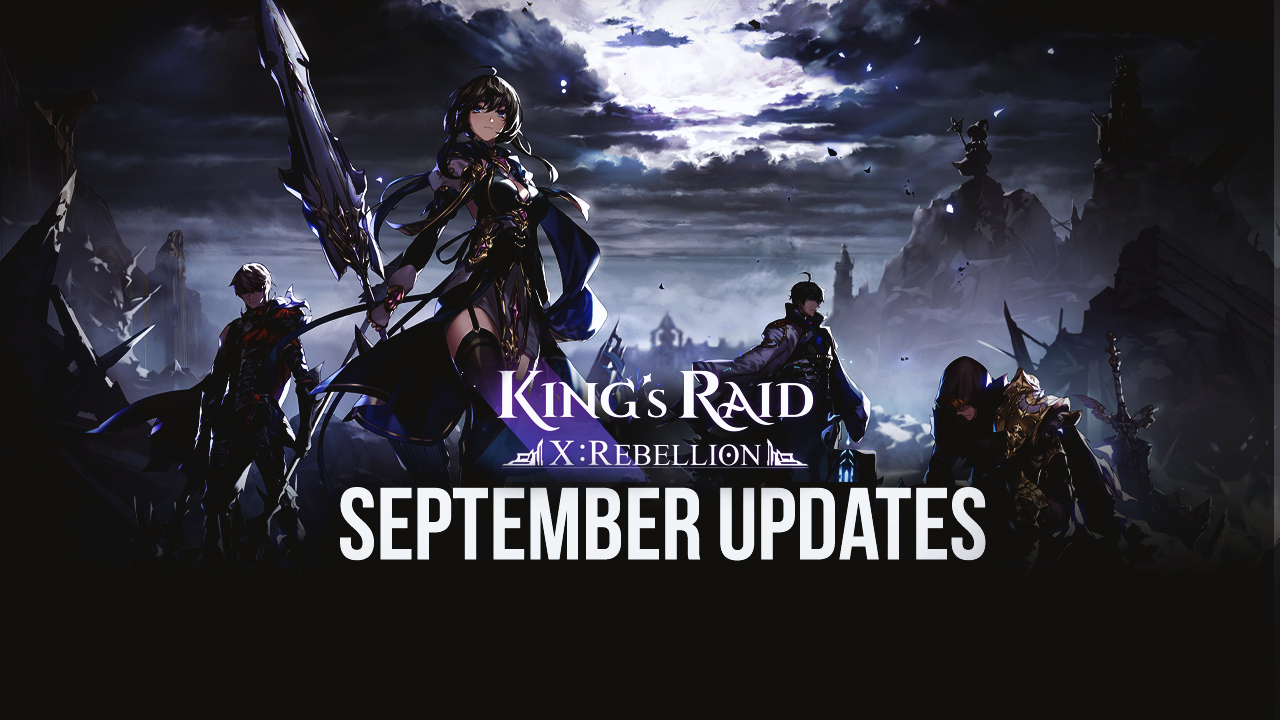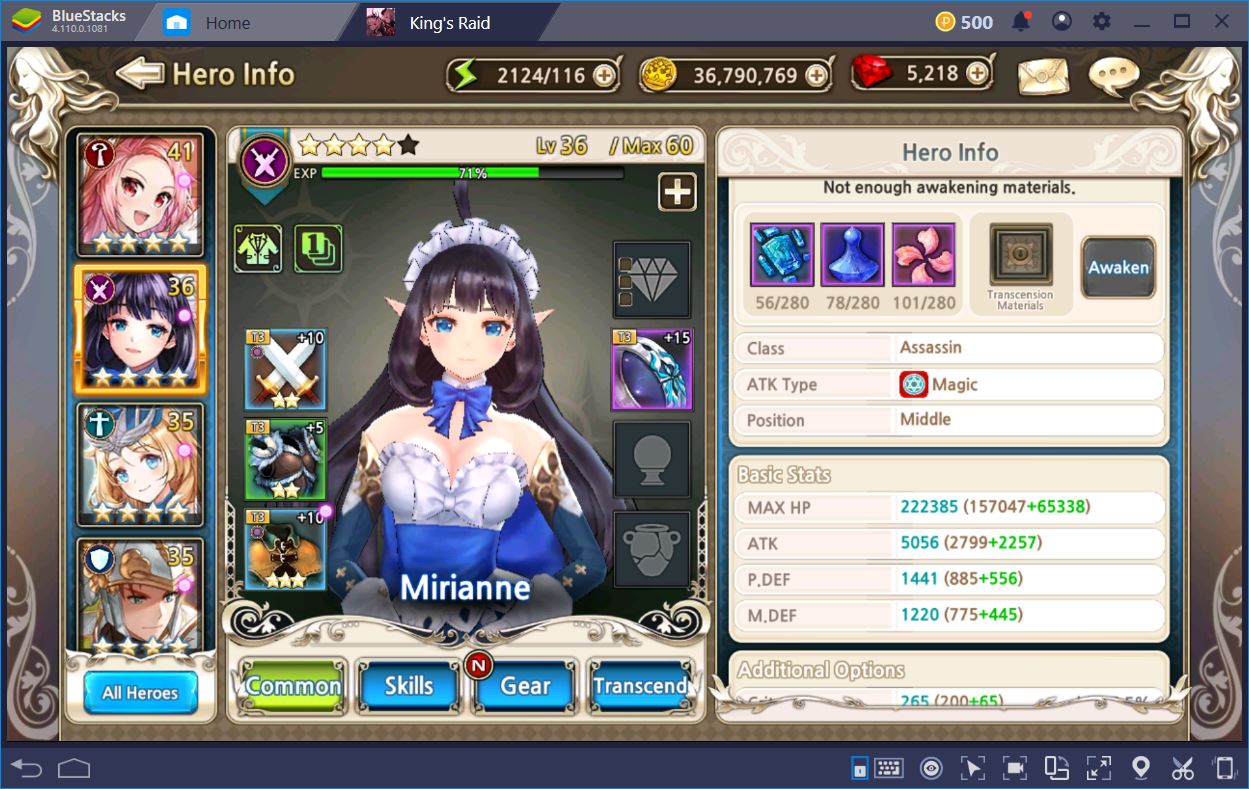King's Raid: How to Build the Best Team
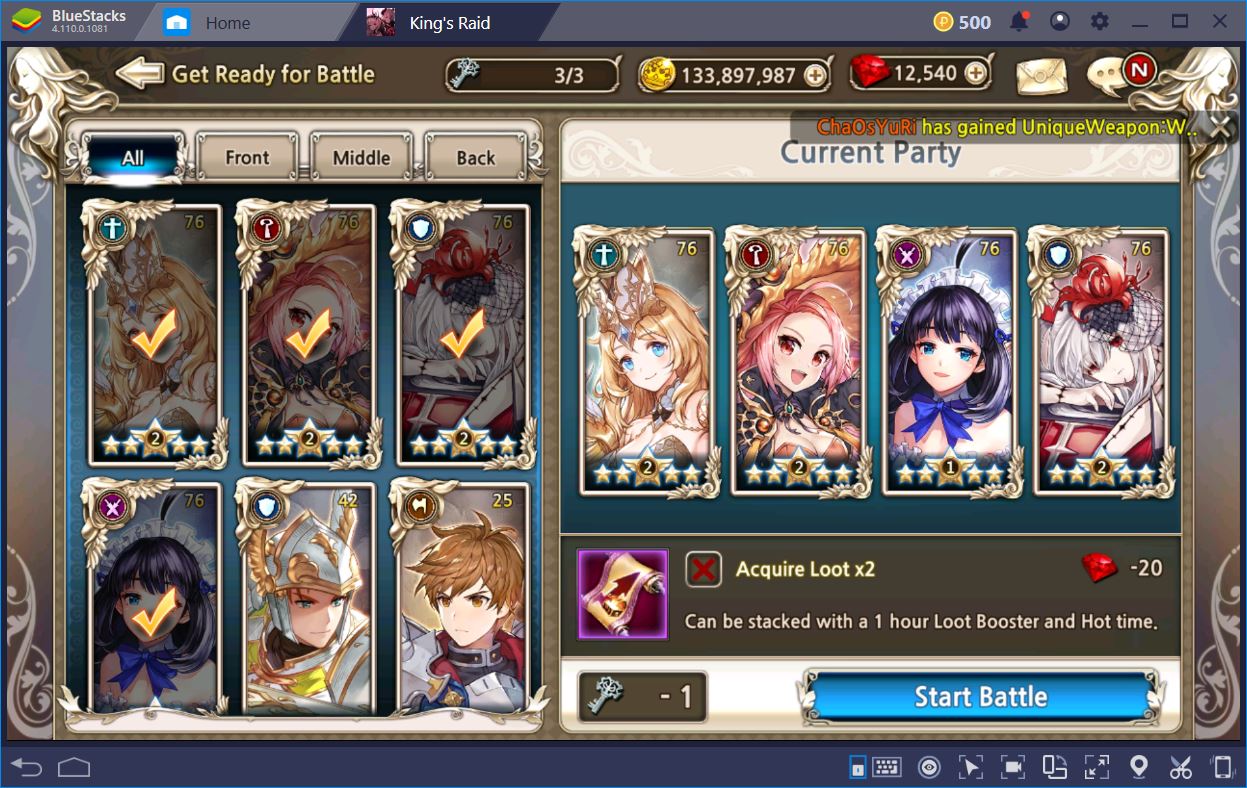
We’ve already delved into the topic of the best heroes in King’s Raid according to their strength in PvE. However, you might wonder who to prioritize for 6- man or 8-man content. Or, better yet, what notions and designs should guide your choice of team composition according to the challenges that lie ahead.

Everybody is initially overwhelmed by the sheer number of heroes currently in the game, not to mention the fact that the developers’ approach to team composition brings back a bit of tactics into mobile games. Praise be to Talos. We know we’ve definitely had our fill of identical mobile RPGs.
Sure, it makes things a bit more difficult when we decide on a line-up, but it also gives us tremendous satisfaction to know that our choices have a decisive impact on our ability to clear content or defeat a challenge.
How to Decide on a Line-up
Let’s get something straight: there is no best team in King’s Raid. You shouldn’t be asking this question in the first place. Instead, what you need to ask yourself is whether your group meets the requirements of what you’re trying to do. Of course, there are characters that are slightly better than others, but there’s also a lot of variety to be had depending on what it is that you need at a given point. To understand this better, let’s briefly go over team structure and types of heroes.

First of all, you’ll notice that everybody has a class. This is one major distinction between your units. The class system of King’s Raid splits characters into Priests, Warriors, Assassins, Knights, Archers, Mechanics, and Wizards. Within these categories, there are several types of heroes according to their roles. You can see a unit’s role by checking the icon on the top left of their portrait. Clause, for instance, has a shield, which makes him a Tank. The other major roles are DPS, Healer, and Buffer.
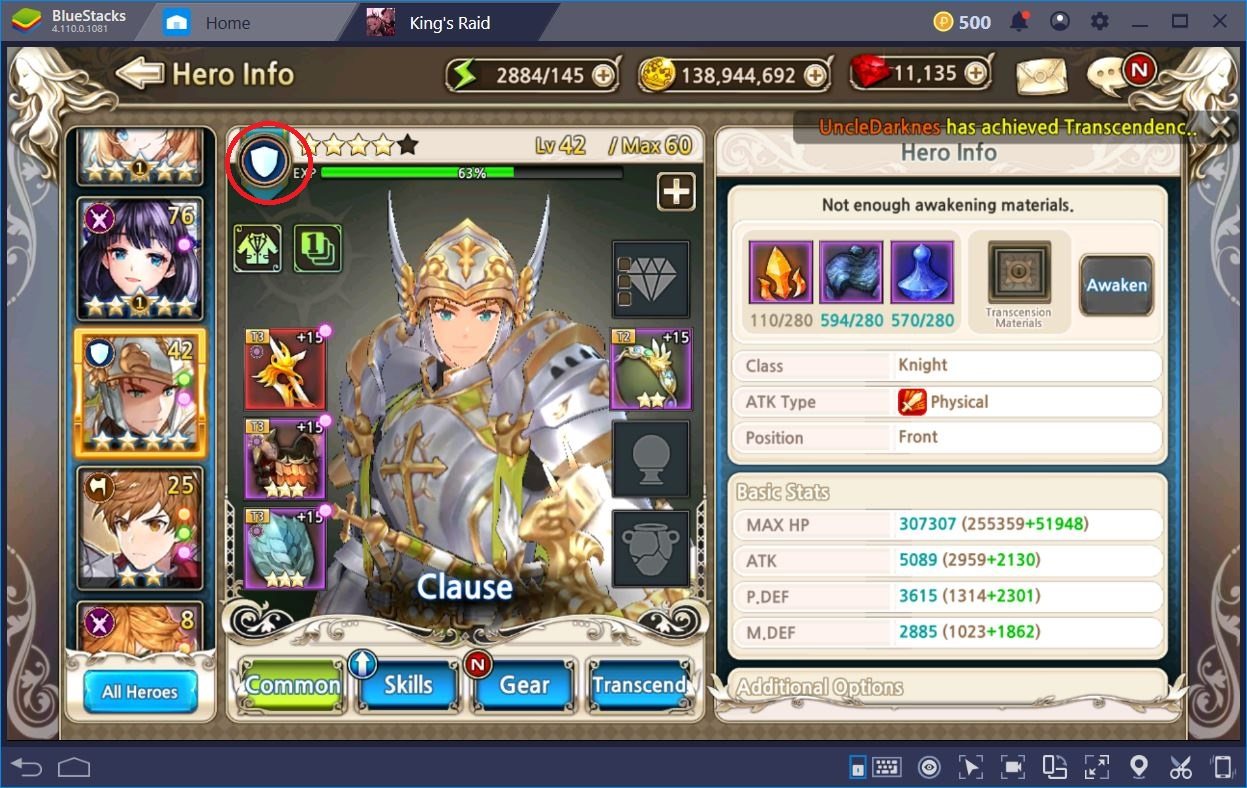
That is essentially your 4-man team composition. But, as with any great game, the class system is not that straightforward. Each of these roles also has variations, which depend on the abilities and affinity of the character in question. You can have main-DPS units, such as Roi from Assassins or Artemia from Wizards, but also sub-DPSers. You can recognize a main DPS by what their abilities do – if the latter are aimed at delivering as much damage as possible, then you know what to do with them.
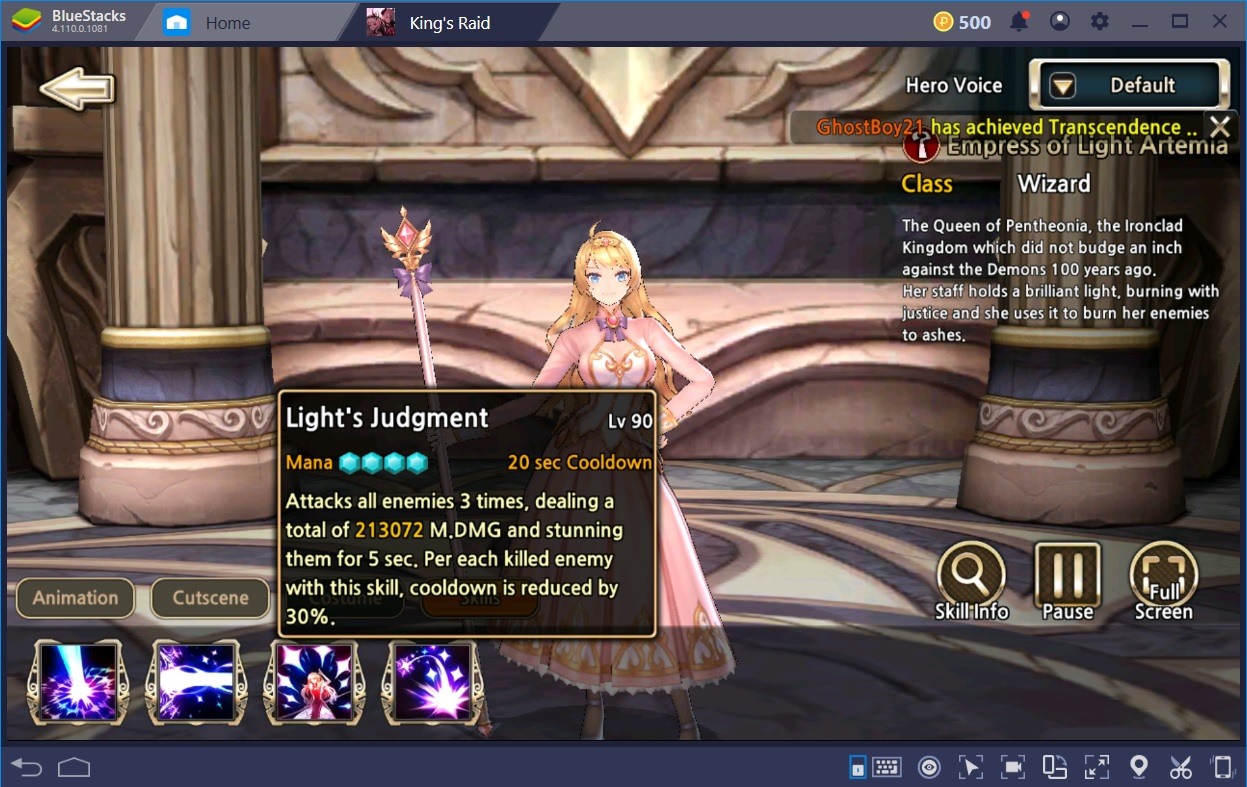
On the other hand, if they’re more of a “team player”, such as Annette of the Mechanics, things get a bit more complicated. Annette is a Buffer, without a doubt, but she can also act as a sub-Healer. The problem with using her to fulfil your healing role is that she doesn’t do as much as, say, Frey, who is an overpowered Priest. If you want to benefit from the immense DPS amplification and CC immunity Annette provides for her team, you better make sure there’s enough lifesteal to go around so you don’t die early on.

Play King’s Raid on BlueStacks
Ideally, you want to have a balanced formation that includes good front liners, amazing DPS, and somebody to sustain everyone through those long engagements. Some of the most used formulae for 4-man teams are the following:
- Tank, main-DPS, sub-DPS, CC/Buff/Healer.
- Tank, Tank, main-DPS, Healer.
- Tank, sub-DPS with healing, Buff with Healing, Buffer.
- Tank, main-DPS, main-DPS, Healer/Buffer.
The first formula is also the one we’re using. Players refer to it as the standard one for PvE since it’s reliable and it gets the job done. You can also experiment with the others at your own discretion, once you get some more levels under your belt.

How PvP Changes Things
As you may already know by now, what works in PvE is not necessarily good in PvP. There are several reasons for this, but the most important one, by far, is that other players know you’ll try to outsmart them, so they prepare their formation accordingly. Because of this, you need to think of your PvP line-up as something that is designed to tackle other people’s PvP strategy.
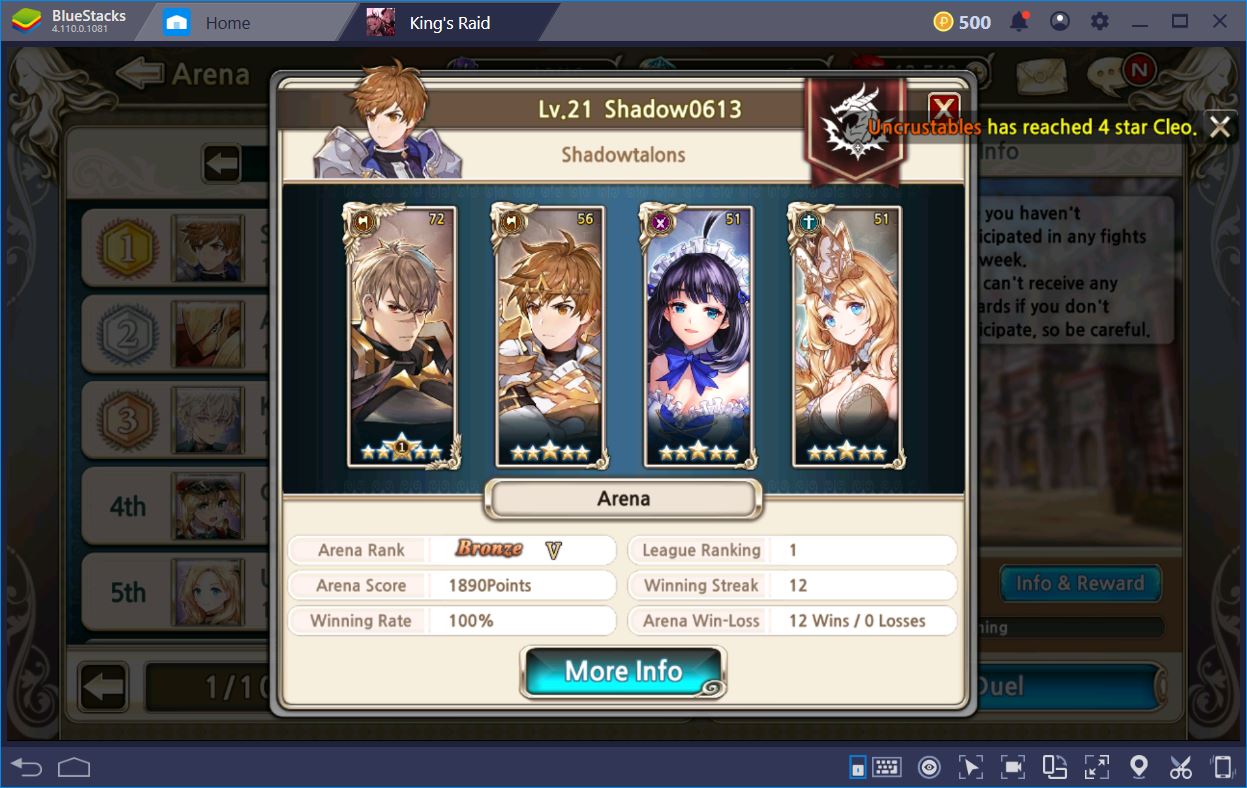
There are three archetypes of PvP formations that are commonly used in Arenas. In no particular order, these prototypes are Burst, Hybrid, and Defence. If you want to remember them easily, associate each with a rock-paper-scissors choice. Let’s briefly explain how each of them is designed to work so that you get a good grasp of the fundamentals.

The Burst setup is designed to output the most amount of damage in the least amount of time. They’ll use Wizards, Assassins, Mechanics – anything it takes to generate a “hit and run” scenario where the battle is over before the opponent is given a chance to retaliate. The best Burst formations can even end a match in 2-3 seconds. No wonder they’re so popular.
Example Burst Setup: Leo, Miruru, Nyx and Loman.
The Defence (or Wall) deck is constructed around maximizing your team’s survivability. Damage is often secondary, as the main goal of these champions is to wear down the enemy slowly, but surely. Instead of damage output, they’ll be crowd controlling and disrupting the flow of the enemy team, which often leads to a painful, unhurried demise.
Example Wall Setup: Rephy, Scarlet, Sonia and Demia.

Last, but definitely not least, the Hybrid or Bruiser deck combines the previous two in an attempt to reach a balance of survivability and DPS output. Most often than not, their tackiness is a result of a dodge setup. Ultimately, these are supposed to be able to counter both of the former. However, things don’t always turn out the way we want them to, so it might also happen that they lose to everything.
Example Bruiser Setup: Juno, Scarlet, Naila and Kasel.
Go Big with BlueStacks
With these basic paradigms in mind, you should be able to construct the best of teams in both PvE and PvP. If your team looks amazing, but, for some reason, you’re still losing, you might want to check the itemization of your units, their individual Transcendence perks (which can be immensely beneficial), or a lack of appropriately leveled individual skills.
As it is the case with everything, King’s Raid has a learning curve. Becoming good at the game will take a bit, but, in our experience, this time will fly by as you have fun exploring the content. If the main storyline is relatively easy to progress through, this is not the case with the Arena. After all, this is where the best of the best come to test their mettle one against the other.


